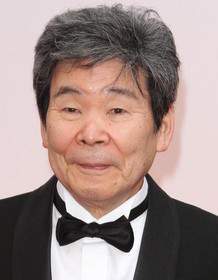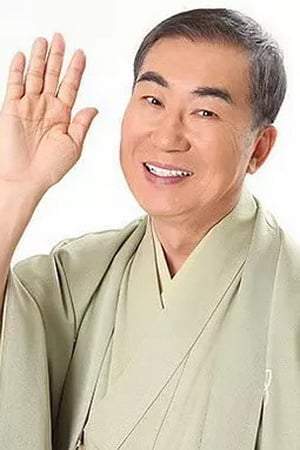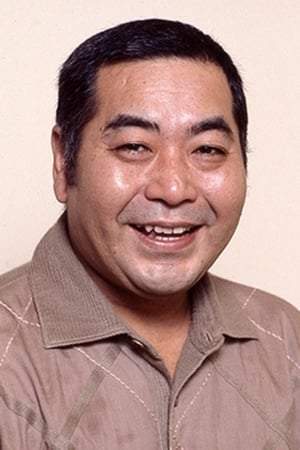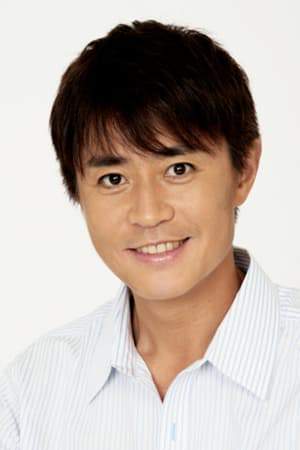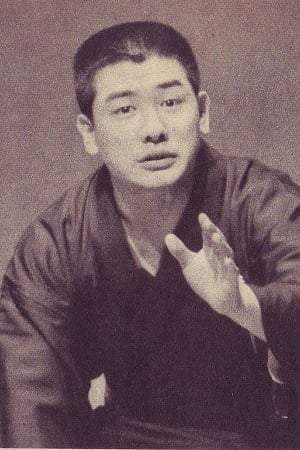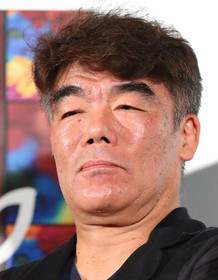Pom Poko 1995
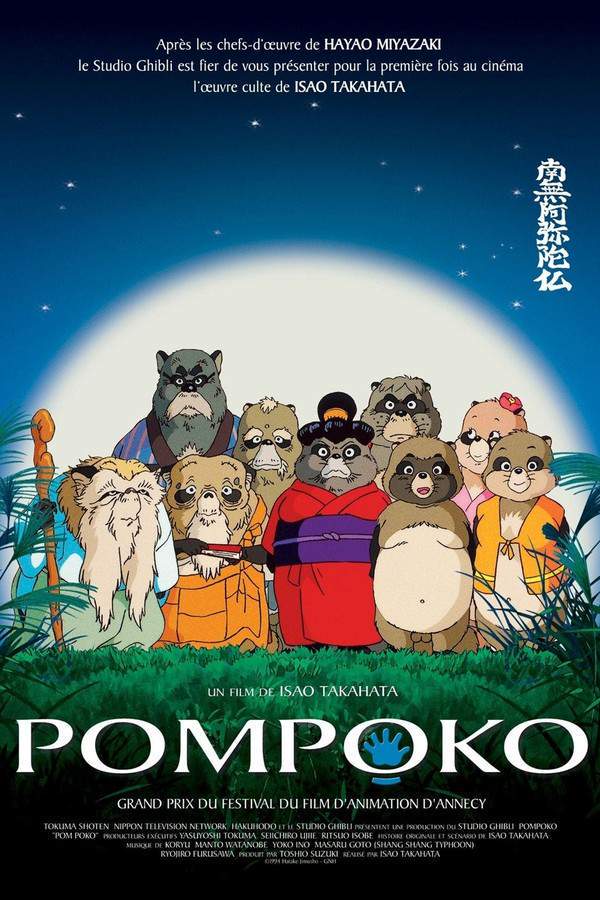
Driven by a deep connection to their forest home, a lively group of raccoons use their shape-shifting abilities to playfully disrupt and challenge the plans of developers who threaten to destroy their habitat. They employ clever disguises and mischievous tactics in an attempt to protect the natural world they cherish.
Does Pom Poko have end credit scenes?
No!
Pom Poko does not have end credit scenes. You can leave when the credits roll.
Meet the Full Cast and Actors of Pom Poko
Explore the complete cast of Pom Poko, including both lead and supporting actors. Learn who plays each character, discover their past roles and achievements, and find out what makes this ensemble cast stand out in the world of film and television.
External Links and Streaming Options
Discover where to watch Pom Poko online, including streaming platforms, rental options, and official sources. Compare reviews, ratings, and in-depth movie information across sites like Wikipedia, Rotten Tomatoes, Metacritic or JustWatch.
Ratings and Reviews for Pom Poko
See how Pom Poko is rated across major platforms like IMDb, Metacritic, and TMDb. Compare audience scores and critic reviews to understand where Pom Poko stands among top-rated movies in its genre.

77
Metascore
tbd
User Score


%
TOMATOMETER

0%
User Score
Take the Ultimate Pom Poko Movie Quiz
Challenge your knowledge of Pom Poko with this fun and interactive movie quiz. Test yourself on key plot points, iconic characters, hidden details, and memorable moments to see how well you really know the film.
Pom Poko Quiz: Test your knowledge about the 1995 animated film 'Pom Poko' and its themes of conservation and the struggles of tanuki.
What is the main threat facing the tanuki in 'Pom Poko'?
New Tama development project
Wildfires
Predators
Lack of food
Show hint
Full Plot Summary and Ending Explained for Pom Poko
Read the complete plot summary of Pom Poko, including all major events, twists, and the full ending explained in detail. Explore key characters, themes, hidden meanings, and everything you need to understand the story from beginning to end.
In the late 1960s Japan, a group of tanuki faces a grave danger due to a massive suburban development project named New Tama encroaching on their forest home in the Tama Hills on the outskirts of Tokyo. This project threatens to fragment their territory and deplete their resources. As the narrative unfolds in the early 1990s, amidst the burgeoning Heisei era, the situation for the tanuki worsens. With their living space shrinking and food growing scarcer each passing year, the tanuki are driven to conflict with one another over the dwindling resources. However, urged by their wise matriarch Oroku, they decide to band together and resist the impending development.
Leading the charge in this resistance are several brave tanuki, including the fierce chief Gonta, the wise elder Seizaemon, the resourceful youngster Shoukichi, and the sagacious Oroku. They tap into and relearn their mystical illusion skills, previously forgotten, to orchestrate a series of distractions and sabotage against the construction efforts. These bold tactics lead to injuries and even fatalities among workers, prompting many to abandon their posts. Yet, despite the tanuki’s valiant efforts, new workers continuously take their place.
Desperate for aid, the tanuki send messengers to seek out legendary elders from distant lands. After years of waiting, one such messenger returns, accompanied by a trio of revered elders from Shikoku, where the tanuki still live harmoniously without threats of development. To instill respect for the supernatural once more, they craft a grand ghost parade, intended to make the humans believe the area is haunted. Tragically, the effort takes a toll when one elder dies from the strain, his spirit departing during a raigō. The parade’s impact is squandered when a local theme park owner falsely claims it was a publicity stunt.
Following this setback, the unity of the tanuki breaks down; they splinter into smaller factions, each adopting different tactics. One faction, under Gonta, resorts to eco-terrorism, leading to a catastrophic confrontation with law enforcement. In a heroic last stand, Gonta merges with other tanuki to form a monstrous tsurube-otoshi, ultimately sacrificing themselves to halt a massive truck. Meanwhile, another group seeks media attention through television appeals, while one elder descends into senility and starts a Buddhist dance cult, leading to a perilous voyage to their doom, while another contemplates forging bonds with humanity, following the paths of the last transforming kitsune.
In a final act of rebellion, the remaining tanuki conjure a breathtaking illusion that briefly restores their former habitat’s glory, evoking nostalgia for what is lost. Yet, as their strength wanes, the tanuki, skilled in illusion but weary, start to blend into human society, leaving behind those unable to transform. Although their media campaign fails to halt construction, it garners public sympathy, compelling developers to allocate a few small parks for their protection. Yet, these parks prove insufficient for the non-transforming tanuki, who struggle to navigate urban life, scavenging for food amid the chaos of human traffic or embracing the countryside, where they compete with resident tanuki.
In a poignant turn of events, Shoukichi, now living within the human realm, encounters a non-transformed tanuki slipping into a narrow passage. Curiosity leads him to follow, discovering a serene clearing where familiar faces gather. Overjoyed, Shoukichi transforms back into a tanuki, reuniting with his companions. As his friend Ponkichi turns to the audience, he earnestly implores humans to show compassion towards tanuki and other animals lacking transformation abilities, advocating for the preservation of their habitats. The scene fades, revealing a golf course swallowed by suburban sprawl, an eye-opening reminder of the consequences of unchecked development.
Uncover the Details: Timeline, Characters, Themes, and Beyond!

Coming soon on iOS and Android
The Plot Explained Mobile App
From blockbusters to hidden gems — dive into movie stories anytime, anywhere. Save your favorites, discover plots faster, and never miss a twist again.
Sign up to be the first to know when we launch. Your email stays private — always.
Discover Film Music Concerts Near You – Live Orchestras Performing Iconic Movie Soundtracks
Immerse yourself in the magic of cinema with live orchestral performances of your favorite film scores. From sweeping Hollywood blockbusters and animated classics to epic fantasy soundtracks, our curated listings connect you to upcoming film music events worldwide.
Explore concert film screenings paired with full orchestra concerts, read detailed event information, and secure your tickets for unforgettable evenings celebrating legendary composers like John Williams, Hans Zimmer, and more.


Pom Poko Other Names and Titles
Explore the various alternative titles, translations, and other names used for Pom Poko across different regions and languages. Understand how the film is marketed and recognized worldwide.
Quick Links: Summary, Cast, Ratings, More

What's After the Movie?
Not sure whether to stay after the credits? Find out!
Explore Our Movie Platform
New Movie Releases (2026)
Famous Movie Actors
Top Film Production Studios
Movie Plot Summaries & Endings
Major Movie Awards & Winners
Best Concert Films & Music Documentaries
Movie Collections and Curated Lists
© 2026 What's After the Movie. All rights reserved.



